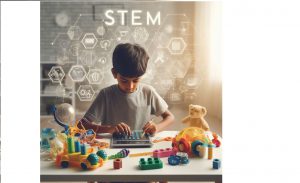Whenever the topic of reforms in the Indian Education System is brought up, it is mostly criticized for not being intrepid and contemporary. But this is so not the case this time. Government has just released a Draft on National Education Policy that was long due from last three years. India has more than 50% of its population below the age of 25 and even a minor change to the system directly affects this huge segment of our society.

Up until now, the government gave free and compulsory education for the students from classes I to VIII. But most of the brain development occurs at the initial age and a child (mostly in the villages) in India is deprived of proper care and education before class I. Keeping this in mind, the community has proposed free and compulsory education for all students from Early Childhood to class 12. A lot of speculations were being made on if the NCF (National Curriculum Framework) 2005 will also change as a part of this new policy. But NCF been found reverent with time and will remain the same for the coming years and amendment will be made in 2030. This is a confident stand by government backing our NCF. Furthermore, the policy indicates skill development as a part of the curriculum before class 12, this is a very crucial step considering some students in India has to go to work just after completing school. The more skilled the students are at this age and stage of their career, the chances of them landing at better jobs increases.
The interesting thing about this New Draft is that it focuses more on implementation that needs to be done to make these changes. Earlier the school system was 10+2 that constitutes 10 years of primary education and 2 years of higher secondary education, it is now to be replaced by 5+3+3+4 system, that will account for 5 years of Foundation for Class I and II, 3 years of Preparatory for Class III, IV and V, further 3 years of Upper Primary for Class VI, VII and VIII and 4 years of secondary for Class IX to XII. This simply reflects that this time Government is not just targeting some paper administrative changes, but a real and a courageous step is being taken to change the system at a very grassroots level.

If we want this change to really reflect on students and the country’s progress, we have to be very sure that the students are in the most qualified hands. This brings us to what the education policy has to say about the teacher’s programs. Teachers need to complete 50 hours of training (CPD) each year, this is to make sure that the teachers are on par with the new technology, pedagogy, and reforms in the system. Like in any other profession the employee has to undergo many pieces of training time by time, just to be updated for the filed, the same has to be done for teachers. There was a lot of quality control issues earlier with Para Teachers (Temporary Teachers) taking over in the mid-course, just to fill the vacancies and this used to halt to the smooth process flow for students. The government’s plans to completely eradicate this by 2020. According to the Global Teacher Status Index, 2018, that compares the other professions with teaching, a Secondary School Teacher stands at 10, far behind professions like Doctor, Lawyer, and Engineer. Considering these, the committee plans to get great students to pursue Bed. Courses by giving scholarships after class 12, aiming to make teaching to be considered a part of a vibrant professional community. The more passionate, qualified and skilled students we have in our BEd. Courses, the more are the chances of developing exceptional teachers.
Lastly, the long-running debate and plans for reducing the curriculum load still continues and is essential To Do point for the government. The community plans to make curriculum to be more Holistic, Space for Experiential learning, discussion, and analysis-based learning. With all the Tinkering Labs being set up in schools, the STEM-driven curriculum to be at the uttermost priority for the Educators. The draft also talks about changing the way students are assessed for their leanings. The community backs up the CCE approach and also proposed the semester-based assessments in the school level. The plan is to make Assessments more holistic and relevant.
Lastly, there is a huge gap between the students pursuing the Science and Arts streams. One of the major reasons being the rigid gap in the curriculums of both the streams. The community plans to dilute this gap, by making the content more interlinked so that the students in either stream feels connected to the other as well. In today’s age and era, where most of the technological products have a story behind them, a history behind the design, it becomes very much important that both these streams have something in common.
Overall, the New Draft seems quite intrepid. It has the potential to uplift our education system to the limits that can have a positive impact on society. When the New India that we talk about these days is the leader in GDP, Technology and Healthcare, we should keep in no stone unturned to make it the best in Education as well. Currently, India ranks at 135 in the Education Index as per the Human Development Reports by the UN. With all the great thoughts behind this new Draft cheers to our Government for such bold steps. As an Educator with a vision to see India among the top country having the best Education System, we would suggest government to incorporate the things like no standardized testing., Psychological counseling, providing professional options past a traditional college degree and a more relaxed atmosphere for students to enjoy the schools and learning!
PS: Government has asked for reviews and suggestions on this draft from all the concerned citizens, as Educators, we can submit our suggestions on https://innovate.mygov.in/new-education-policy-2019/ by 30th June 2019.
 1780
1780




